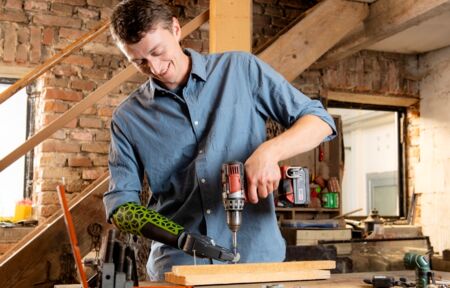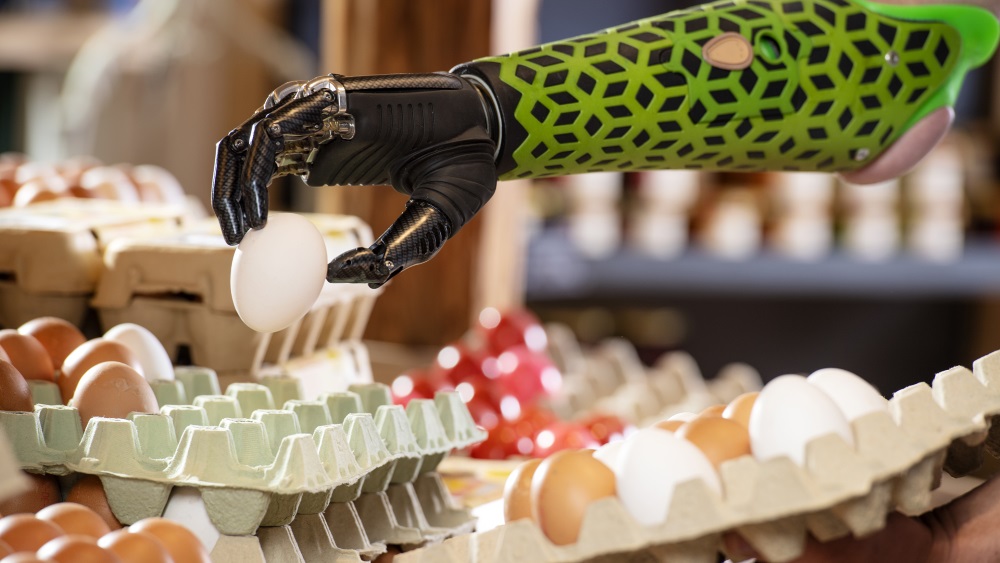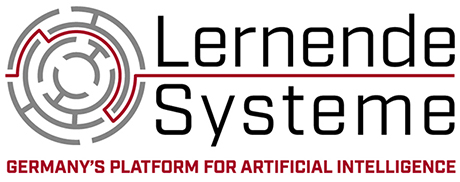The self-learning hand prosthesis
The medical technology company Ottobock has developed a hand prosthesis based on Artificial Intelligence. Hand amputees can control it intuitively with the power of their thoughts and thus lead an active, independent life.

Wolfgang Bauer is 21 years old when he gets his right hand into a shredder. "Of course, at the beginning I hoped that maybe the hand could be saved. But I soon realised that it couldn't be done," recalls the now 24-year-old. In the meantime, Wolfgang Bauer is a prospective agricultural master craftsman and is fully involved in his parents' business: He supplies the animals with hay and water, drags boxes, works in the small farm workshop or on the computer and even sorts raw eggs - and all of this with both hands.
Classify patterns, trigger movements
This is made possible by the "Myo Plus" hand prosthesis control system from the medical technology company Ottobock in Duderstadt. The neon green-black high-tech instrument is based on pattern recognition and Artificial Intelligence. The special thing: Bauer operates his artificial hand solely with the power of his thoughts. As soon as he wants to make a certain hand movement, his brain sends signals to his forearm muscles. Because despite the accident, Bauer can still imagine opening, closing or turning his hand. In doing so, he activates the remaining muscles in the stump.
With the help of eight electrodes, "Myo Plus" measures the incoming signals and recognizes patterns that belong to individual movements. The intelligent prosthesis can classify and amplify the signals and patterns, and finally translate them into a hand movement. "I don't even have to think about the controls. Within a second, it is practically automatic. Just like a real hand," says Bauer. On his old prosthesis, he always had to flip a kind of switch with his left hand. "Today I just think about the grip I want to make, and the prosthesis control puts it into action."
Fine tuning via App

A self-learning prosthesis also makes sense from a medical point of view. "The big advantage overall is that the prosthesis learns from the user, and not, as has been the case up to now, the user has to learn how a prosthesis works or adapt to the way the prosthesis functions," explains Dr. Thomas Fuchsberger. As senior physician at the BG Hospital in Tübingen, he treated the first patients with the "Myo Plus" prosthesis control system as part of a clinical study.
The first adjustment is carried out by an orthopaedic technician. However, an app enables patients to optimise the control themselves. This allows them to better train, refine and then store movement patterns. "I always open the hand quickly and then go into the individual grips. It's all via the subconscious and that's why I'm very, very fast," says Wolfgang Bauer explaining the learning process of "Myo Plus" pattern recognition.
Different hands
The Ottobock prosthesis control system can process more signals and trigger more hand movements than conventional systems and can be controlled faster, more precisely and more intuitively. In addition, Wolfgang Bauer can use different prosthetic hands for different tasks on the farm - for example, one for light but varied work and another for a firm grip. His new hand prosthesis based on artificial intelligence sets him virtually no limits.
Application facts
Sensors and Communication
- Robotics
Ottobock SE & Co. KGaA
Large Enterprise
Website
